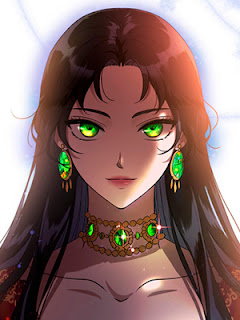The Allure and Controversy of "Matar a la Villana" Tropes
In the realm of storytelling, certain tropes capture our imagination and spark endless debate. One such trend, particularly popular in genres like romance and fantasy, is the "matar a la villana" trope – literally translating to "kill the villainess." This phrase, while seemingly straightforward, opens a Pandora's Box of questions about how we perceive female antagonists and the satisfaction some derive from their downfall.
The "matar a la villana" trope typically involves narratives where a female character perceived as antagonistic, often due to her ambition, independence, or unconventional behavior, faces a tragic end. This demise might come at the hands of a traditionally heroic figure, serve as a plot device to further the hero's journey, or even act as a form of "redemption" for the villainess's past transgressions. While this might seem like a simple narrative tool, the prevalence of "matar a la villana" prompts deeper analysis.
The roots of this trope are tangled within traditional storytelling and societal expectations. Historically, narratives often positioned women within limited archetypes – the innocent maiden, the wicked stepmother, the jealous rival. These tropes, while evolving over time, continue to influence how female characters are written and perceived. The "matar a la villana" trope, whether intentionally or not, can tap into these pre-existing frameworks, potentially reinforcing harmful stereotypes about female ambition and agency.
However, the discussion surrounding "matar a la villana" is far from black and white. The complexity arises from the fact that many find themselves drawn to narratives featuring powerful, even ruthless, female characters. The villainess, often written with depth and compelling motivations, can be as captivating as the hero, if not more so. This fascination, however, doesn't erase the problematic implications of consistently framing their narratives around ultimate demise.
The heart of the "matar a la villana" debate lies in the desire for more nuanced representations of women in media. Audiences are increasingly critical of stories where female characters, especially those who defy conventional expectations, are denied agency, growth, and ultimately, survival. The conversation then shifts from simply "killing off" the villainess to exploring her motivations, complexities, and potential for redemption or evolution beyond the confines of the trope.
It's crucial to acknowledge that the "matar a la villana" trope, while problematic in its oversimplification, doesn't exist in a vacuum. It's a symptom of larger issues regarding the representation of women in media and the limitations often placed on their narratives. The solution, then, lies not in shying away from complex female characters or their capacity for darkness, but rather in challenging ourselves as audiences and creators to imagine narratives where their stories extend beyond a predetermined, often tragic, end.
Instead of resorting to easy tropes, we must demand narratives that allow female characters, even those deemed "villainesses," the space to be flawed, powerful, and ultimately, fully realized human beings.
Jpj tukar hak milik kenderaan borang navigating vehicle ownership transfers in malaysia
Boost your well being with inspiring health quotes
Jodi arias trial evidence














